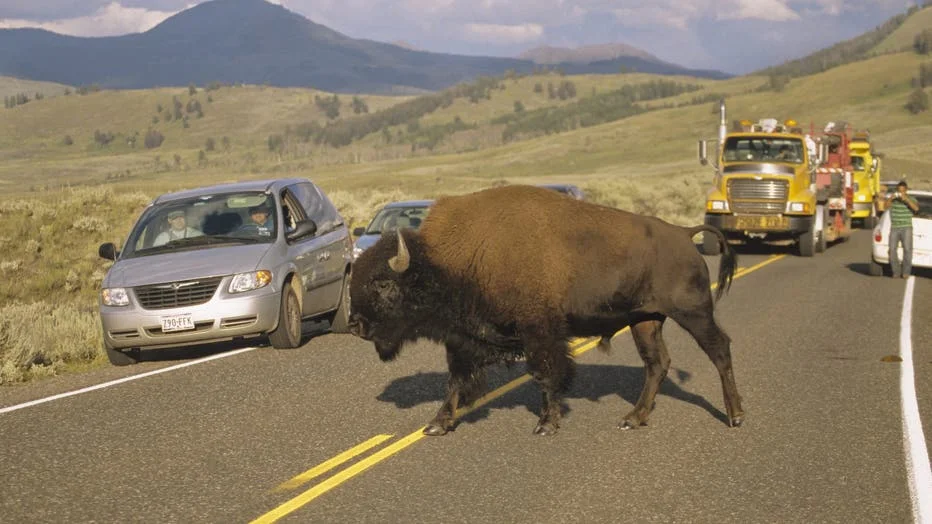
What Happens When Tourists Get Too Close to Yellowstone’s Mighty Bison?
In the vast wilderness of Yellowstone National Park, a simple misstep can turn a dream vacation into a dangerous encounter. This week, a Florida man learned that lesson the hard way, sustaining minor injuries after getting too close to one of North America's largest and most unpredictable animals: the bison. As summer crowds flock to the park, this incident serves as a stark reminder of the importance of respecting wildlife boundaries in one of America's iconic natural treasures.
The event unfolded on a Sunday at Lake Village, a popular area featuring cabins, lodges, and campsites along the shores of Yellowstone Lake. According to park officials, the 47-year-old visitor from Cape Coral, Florida, approached a bison too closely, resulting in the animal goring him with its horns. Fortunately, he escaped with only minor injuries and received prompt treatment from emergency medical staff. This marks the first such bison-related injury in Yellowstone for 2025, highlighting an ongoing pattern of human-wildlife conflicts in the park.

Yellowstone's bison population, which has rebounded from near extinction to over 5,000 strong through decades of conservation efforts, is a symbol of American environmental success. However, these massive creatures—standing up to 6 feet tall and weighing up to 2,000 pounds—can be deceptively dangerous. Park officials emphasize that bison have injured more people in Yellowstone than any other wild animal, often because visitors underestimate their speed and territorial nature. Bison can charge at up to 35 miles per hour, far outpacing human runners, and they react aggressively when feeling threatened.
Comparing this incident to recent years reveals a troubling trend. In 2024, at least two people were gored, including an 83-year-old woman from South Carolina who was lifted off the ground by a bison's horns, suffering serious injuries. Another case involved a man under the influence of alcohol who kicked a bison, provoking an attack. Back in 2023, a woman was significantly injured in a similar goring, and a separate incident saw a newborn bison calf euthanized after human interaction led to its rejection by the herd. These stories underscore a broader issue: tourists' reckless behavior not only endangers themselves but also disrupts fragile ecosystems and wildlife populations.
Experts, including National Park Service representatives, repeatedly warn visitors to maintain a minimum distance of 25 yards from bison and other large herbivores, and 100 yards from predators like bears and wolves. As Genevieve Glatsky of The New York Times notes in her reporting, "Bison defend their space when threatened, and can run three times faster than humans." Such guidelines are crucial, yet incidents persist, possibly fueled by social media's allure for "perfect shots" or a false sense of familiarity with these animals. This raises questions about the balance between tourism and conservation: How can parks better educate visitors to prevent these avoidable tragedies?
In conclusion, while Yellowstone's bison represent a triumph of wildlife recovery from the brink of extinction—driven by policies that once nearly wiped them out—these encounters highlight the human cost of ignoring nature's rules. What can we learn from stories like this to ensure safer visits for everyone? As millions more tourists are expected this summer, it's a timely call to action. Share your thoughts in the comments below: Have you ever faced a wildlife scare, and how did it change your approach to nature?